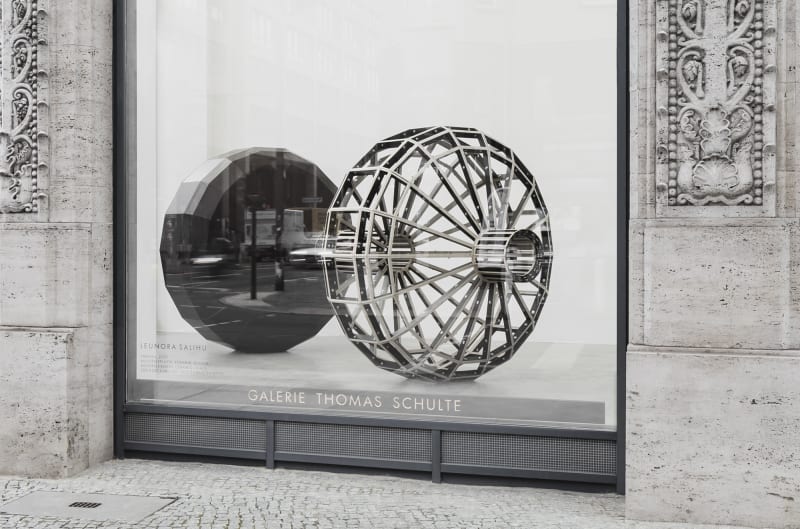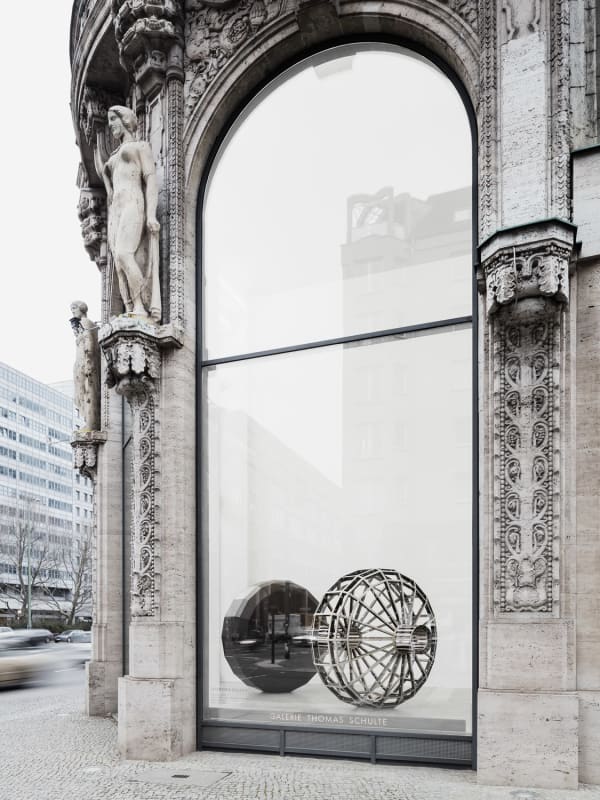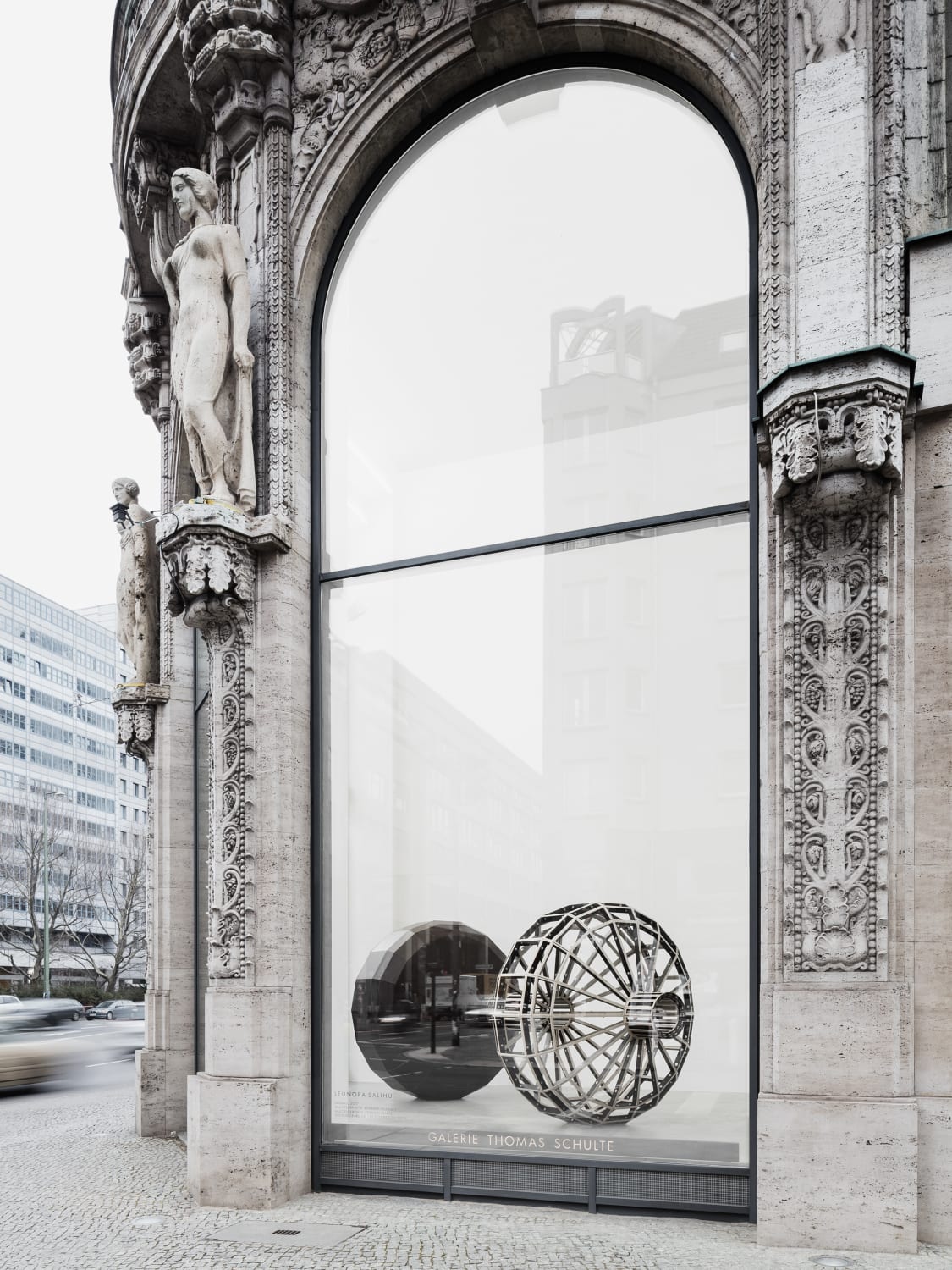From March 17 to April 14 Leunora Salihu presents her sculpture Urknall (Engl. big bang) in the Corner Space of the gallery. The five-meter-long and over two-meter-high sculpture is a complex modular construction of multiplex boards. Two large wheel-shaped modules – equally mechanical and organic in appearance – are held together and in equilibrium by a core of glazed ceramic placed in the center of its horizontal axis.
Leunora Salihu’s monumental construction Urknall is reminiscent of a space station with two cabins linked by a corridor interrupted in the center. Or does it describe a cosmic process, where concentrated forces and interstellar matter are at work, energetically expanding and retracting from the sparkling nucleus? Urknall can be seen as a serial module, “the interlocking of additional identical sculptures would yield a chain that would extend endlessly into space,” writes Susanne Meyer-Büser. A visionary, utopian idea with which the artist opens up the space towards infinity.
Urknall is a physical manifestation of Salihu’s ongoing search for a timeless artistic language and experimentation with different material and spatial effects. It receives its dynamic through the contrast between levity and gravity: The rigid wood is used in such a way that on the one hand it appears delicate and filled with air while on the other hand, because of its cladding, it appears heavy and robust. Urknall thus receives its specific spatial dynamics through, among other things, the contrast of lightness and heaviness combined in the work. Furthermore, the rhythmic design of the scaffold allows the artist to translate the statics of the construction into the visual appearance of a revolving movement. The beholder enters into a relationship with the object, with its corporeality. In fact, the observation of human proportions and movement to Salihu is fundamental for the design of her sculptures. In analogy to the encounter with another living being, the presence of the sculptural form in space for the beholder becomes tangible relating their own bodily presence to it.
Another central issue for Salihu is the nature of chosen materials. The use of wood, plaster, steel, clay, ceramic and plastic also dictate the color palette of her works, for she refrains from applying color. Shape and material affect are put into focus. By abstracting and estranging familiar shapes from everyday life, Salihu creates broad fields of associations, yet, all deriving from the same, unique setting.





